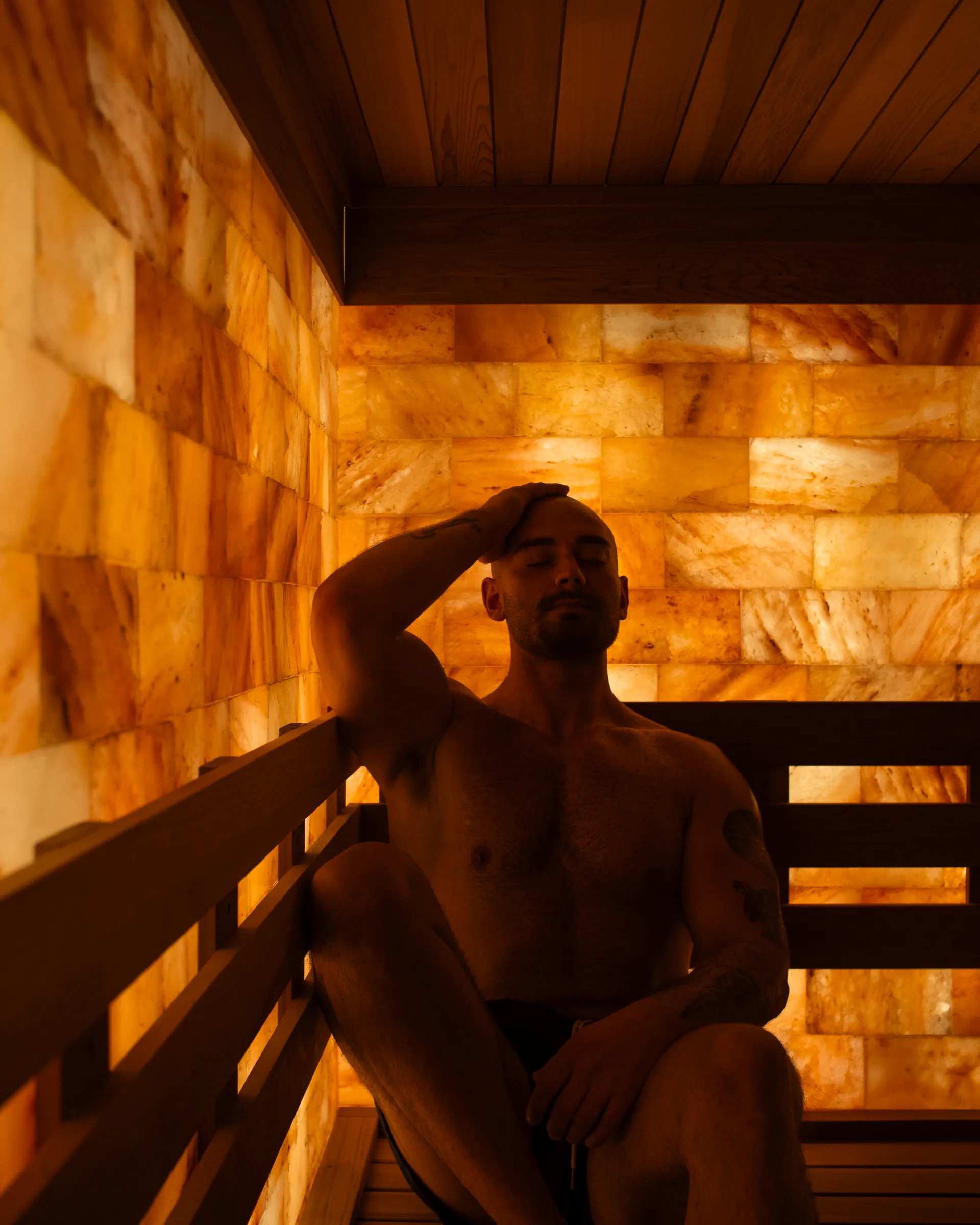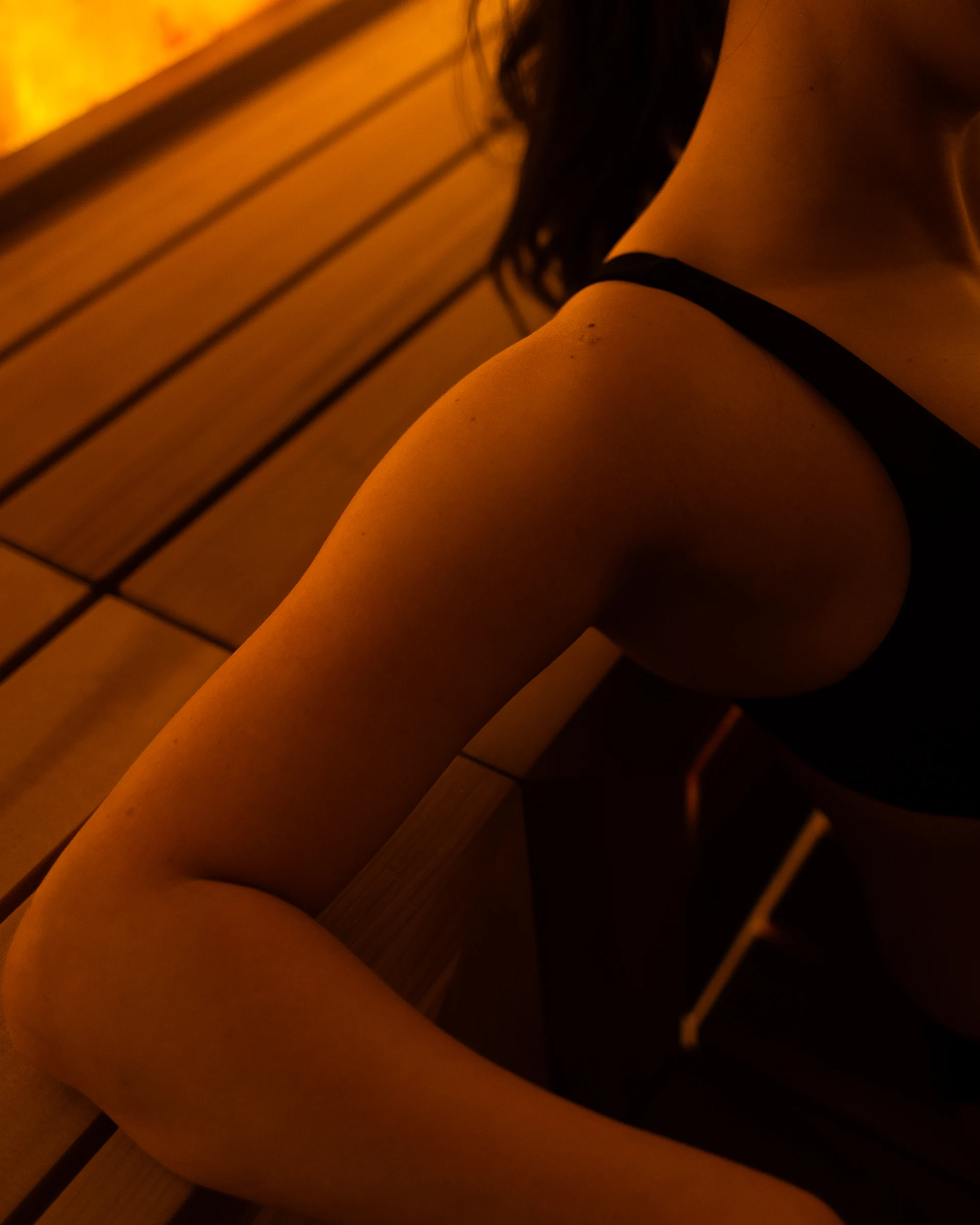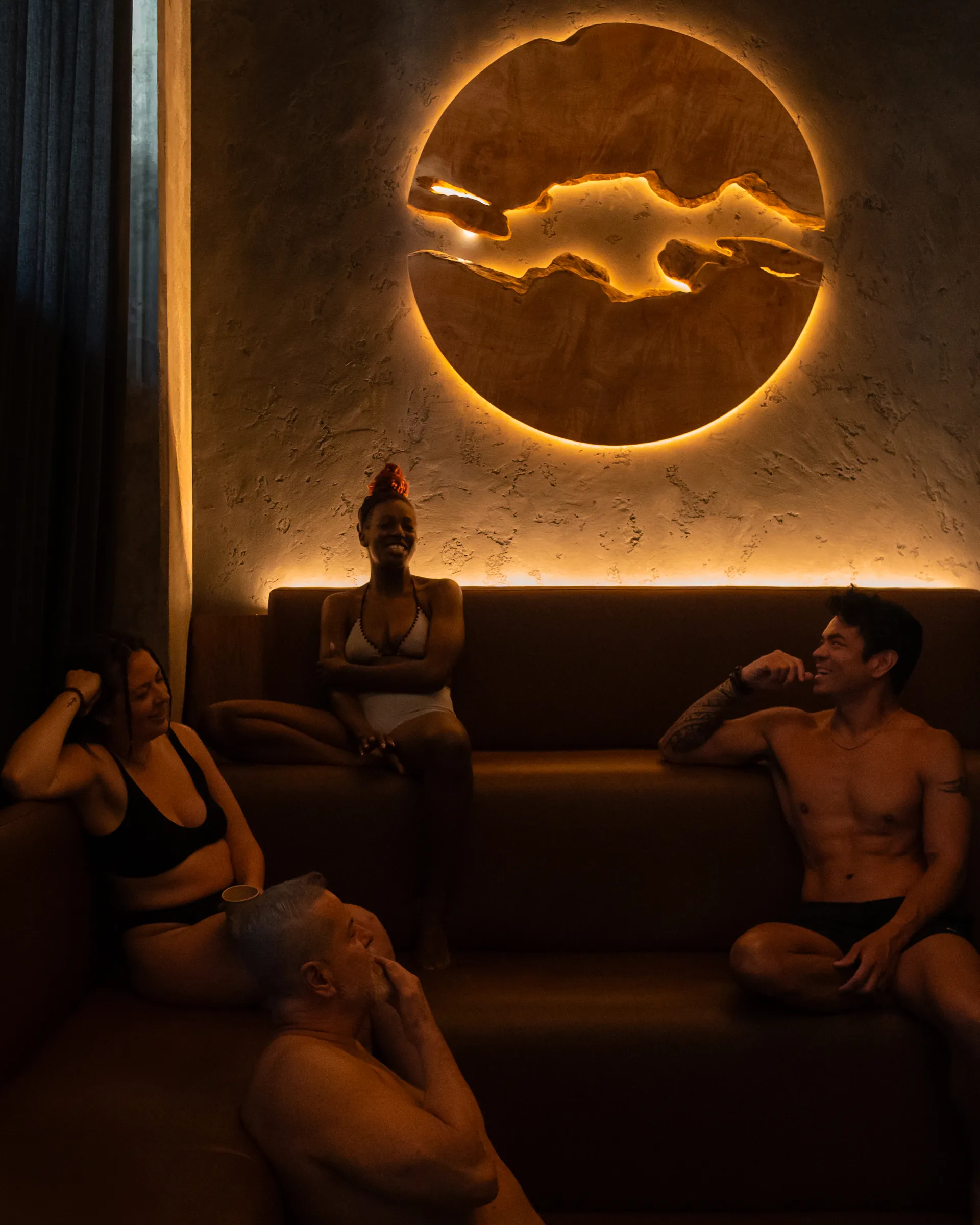TL;DR - Key Takeaways
- Sauna architecture directly influences psychological calm and perceived stillness through the interplay of light, material, sound, and spatial proportion (Frontiers in Human Neuroscience, 2017).
- Design elements that promote symmetry and spatial balance enhance parasympathetic activation and support emotional grounding (Formiga et al., 2022).
- At AetherHaus, sauna architecture blends Nordic minimalism with West Coast grounding, integrating sensory contrast, acoustics, and organic texture.
- Interiors with wood show reduced stress compared to those without. (Burnard & Kutnar, 2015).
- Built environments that minimize sensory clutter increase focus, creativity, and emotional regulation (Journal of Environmental Psychology, 2023).
Introduction
Stillness is not an absence. It is a design.
Every curve of wood, every shaft of light, every rhythm of heat and air shapes how the body feels and how the mind responds. In a well-crafted sauna, architecture becomes a silent guide; one that invites presence and dissolves noise.
At AetherHaus, this philosophy drives every space we build in Vancouver. The sauna is not only a structure for heat; it is a vessel for attention, balance, and restoration.

The Architecture of Calm
How Space Shapes Emotion
Each shape carries its own kind of quiet. Soft forms calm us; sharp ones stir alertness. In one study, people walking through curved interiors showed unique patterns of brain activity connected to emotional ease - evidence that our bodies read form long before our minds interpret it (Frontiers in Human Neuroscience, 2017).
In sauna design, these principles become tangible. Tight enclosures focus attention inward. Wood grains and warm tones soften visual stimulation. The repetition of benches and slats creates rhythm - a visual cadence that steadies the mind.
Researchers describe this as neuroarchitecture: design that elicits physiological responses linked to safety, rest, and cognitive clarity. Within a sauna, the same qualities that quiet the body also quiet thought.
Material Honesty
Natural materials form a bridge between body and space. A controlled experiment comparing rooms with wooden interiors versus resin/plaster found that wooden rooms produced higher heart rate variability - an indicator of increased calming response in the body (Journal of Environmental Psychology, 2023).
A review of wood and human stress further supports this: interiors with wood show reduced autonomic stress measures compared to those without. (Burnard & Kutnar, 2015)
In the Haus, untreated cedar lines the interior, breathing subtly with humidity and heat. Its scent activates olfactory pathways linked to memory and emotional grounding. The material feels alive, expanding and contracting with the air -a quiet reminder of presence and change.
This choice of wood is not aesthetic alone; it is part of the atmosphere of trust that allows guests to settle.

Designing Stillness: AetherHaus Approach
The Spatial Philosophy
At AetherHaus, design begins with sensation. Architecture becomes part of the ritual. Benches are arranged in concentric patterns to support inclusion without intrusion. Lighting is recessed and indirect, casting gentle gradients rather than glare.
This approach draws from Nordic minimalism and Japanese ma, the principle of purposeful emptiness. Each void, surface, and line is intentional - a frame for awareness.
By removing distraction, design invites what is already present: breath, warmth, and silence.
Light, Acoustics, and Temperature Flow
Sound is as important as heat. The curved cedar surfaces soften echoes, while the absence of mechanical noise preserves stillness.
Light filters through panels at low intensity, mimicking dawn. This gentle light helps regulate circadian rhythm and supports relaxation (Journal of Environmental Psychology, 2023).
Temperature gradients are designed to be perceptible but smooth, creating a sense of movement without disruption. Each architectural detail serves one goal: to sustain calm attention.
The Vancouver Context
Vancouver’s landscape informs the Haus design philosophy. The interplay of ocean air and forest scent permeates the atmosphere, grounding the architecture in place.
Where urban rhythm meets natural quiet, the sauna becomes a bridge; a modern refuge shaped by elemental forces. This connection to environment reinforces what AetherHaus calls “designed stillness”: architecture that holds the body while releasing the mind.
The Psychology of Restorative Design
Symmetry and Human Cognition
Our brains respond instinctively to spatial harmony. Symmetry and proportion evoke perceived safety and familiarity.
When the physical world aligns, mental strain eases, creating space for reflection and deeper rest. In a sauna, this means that design itself becomes a form of mindfulness.
Sensory Reduction and Mental Clarity
Minimal spaces have a way of clearing the mind. When the senses are not competing, the body remembers how to rest.
Research shows that environments with simple, harmonious geometry support attentional restoration - the brain’s natural process of returning from overstimulation to focus and calm (Frontiers in Human Neuroscience, 2017).
Inside the Haus, simplicity is deliberate.
There are no screens. No mirrors. No distractions.
Light moves gently across the cedar. Sound fades into warmth.
Guests often describe a widening sense of space, a mental quiet that lingers long after the session ends. This stillness is not taught, it unfolds through design itself.
How AetherHaus Extends Design into Experience
Integration with Ritual
Each guided format blends spatial awareness with embodied practice. In the space within, silence interacts with architecture to focus perception. In the pause, guided breath aligns with shifting air and light, reinforcing the relationship between structure and self.
Design becomes part of the facilitator’s toolkit. Light, temperature, and airflow act as cues, teaching the body to recognize stillness as a physical environment, not an abstract idea.
A Living Architecture
Every surface at AetherHaus evolves through use. Cedar absorbs scent; light changes with humidity. This living architecture responds to presence - it is both frame and participant in the ritual.
Guests describe the experience as “entering a space that breathes.” In this way, architecture becomes more than form; it becomes dialogue.
Conclusion
Architecture has always shaped consciousness. In the sauna, it shapes calm.
By balancing geometry, light, and natural materials, design becomes a silent teacher of stillness. At AetherHaus, this philosophy forms the foundation of every room - guiding guests toward presence through sensory restraint and thoughtful rhythm.
Discover how space can shape awareness through guided experiences or book a session to enter the architecture of stillness in Vancouver.

FAQ
How does architecture influence relaxation in a sauna? Studies show that natural materials and soft lighting reduce heart rate and cognitive tension, enhancing calm and stillness (Burnard & Kutnar, 2015)
Why does minimalism matter in restorative design? Minimalist environments lower sensory clutter, improving focus and perceived safety (Journal of Environmental Psychology, 2023).
How does AetherHaus apply these principles? Yes, through intentional spacing, subdued light, and seating that encourages inclusion without distraction.
Can architecture influence mood and mental clarity? Yes. The rhythm of space shapes the rhythm of thought. Balanced geometry, natural curves, and spatial harmony are linked with measurable reductions in stress response (Formiga et al., 2022).
What makes Vancouver’s AetherHaus unique in design? The space integrates West Coast naturalism with Nordic sauna principles, creating a sensory bridge between city and stillness.
